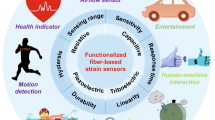Abstract
A number of different types of adhesives are used in the assembly of electronic components and devices. This article provides an overview of such adhesives that also have another job-they work at conducting electricity or heat. The resins or binders in these adhesives range from thermosetting to pressure-sensitive. Conductivity is obtained by the judicious choice of filler. For electrically conducting adhesives, the fillers range from silver flake to silver-coated fibers. For thermally conducting adhesives, the fillers range from aluminum oxide to boron nitride. We also discuss a specific type of electrically conducting adhesive-the z-axis film adhesive. In these adhesives, particles are oriented in such a fashion that allows conduction in the direction perpendicular to the adhesive, but not in the plane of the adhesive.
Similar content being viewed by others
References
R.P. Kusy, J. Appl. Phys. 48 (1977) p. 5301.
G. Rabilloud, High Performance Polymers, Vol. 1: Conductive Adhesives (Editions TECHNIP, Paris, 1997).
O. Reynolds, Philos. Trans. R. Soc. London, Ser. A 177 (1886) p. 157
see also D. Dowson, History of Tribology (Longman, London, 1979) p. 322.
J.N. Sweet, in Thermal Measurements in Electronic Cooling, Chapter 5, edited by K. Azar (CRC Press, New York, 1997).
C. Chui-P., G.L. Solbrekken, and T.D. Chung, in Proc. SEMITHERM XIII Symp. (Institute of Electrical and Electronics Engineers, Piscataway, NJ, 1997) p. 57.
A. Devpura and P.E. Phelan, in Proc. ITHERM 2000 (Institute of Electrical and Electronics Engineers, Piscataway, NJ, 2000) p. 21.
T. Masayuki, S. Tateda, T. Kimura, and M. Yamato, U.S. Patent Application 20010004131 (June 21, 2001).
S. Tead, G. Bluem, and F. McCormick, in Proc. Soc. of Plastics Eng. Reg. Tech. Conf.: Plastics for Portable Electronics Conf. (Society of Plastics Engineers, Brookfield, CT, 1995) p. 114.
K.S. Hung, R.L. Rudman, and C. Murray, in Proc. ISIC-99 (Institute of Electrical and Electronics Engineers, Piscataway, NJ, 1999) p. 402.
R.R. Tummala and E.J. Rymaszewski, Micro electronics Handbook (Van Nostrand Reinhold, New York, 1977) p. 268.
D. Bruner, Int. J. Microcirc. Electron. Packag. 18 (3) (1995).
H. Nishimura and Y. Kishimoto, in Proc. First Int. Electron. Manuf. Symp. (Institute of Electrical and Electronics Engineers, Piscataway, NJ, 1997).
A.V. Pocius, Adhesion and Adhesives Technology: An Introduction, 2nd ed., Chapters 8, 9, and 10 (Hanser Gardner, Munich, 2002).
D.J. Dunn, P.P. Vano, J.P. Moran Jr, M. Holmes, and E. Frauenglass, U.S. Patent No. 4,722,960 (February 2, 1988).
J.D. Moon, G.R. Ward, and R.J. Webb, European Patent No. EP0566093 (October 20, 1993).
Rights and permissions
About this article
Cite this article
Murray, C.T., Rudman, R.L., Sabade, M.B. et al. Conductive Adhesives for Electronic Assemblies. MRS Bulletin 28, 449–454 (2003). https://doi.org/10.1557/mrs2003.127
Published:
Issue Date:
DOI: https://doi.org/10.1557/mrs2003.127




